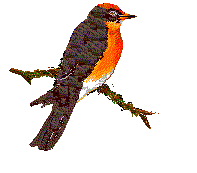
You are Visitor number
|

In 1997 I had the experience very few persons have enjoyed, the opportunity to visit these magical, mysterious, and perhaps enchanted islands! I never thought I’d take another course at the Panama Canal College once graduating in 1996. But, never say never, especially if its Dr. Jack Petersen Ph.D. who’s giving it. I’ve taken many courses with Dr. Petersen (I’ll always remember Entomology: the science of "bugs" or "bichos"). Or visiting faraway places such as Campana National Park, Isla Tigre, Nusagandi, or even Sarigua National Desert, in Panama. But these were only appetizers compared to "Field Study" 97, a once in a lifetime (now maybe more than once) trip to the Galapagos (February 3-12, 1997) and mecca for all aspiring naturalists everywhere. Last thing we heard Dr. Petersen was already preparing Field Study 98. Here were the fabled islands of Darwin, Melville's "Encantadas", or perhaps the legendary Garden of Eden. A place with animals so tame that the birds would alight on your head or feed from the hand, as they once did with the first pirates and bucaneers whom sought shelter there. The Spaniards never ventured there, once Bishop Berlanga first discovered them in 1532, christening them "Galapagos", for the saddle shaped land tortoises he found there. Since they were considered to be adrift, due to their everchanging ocean currents, they were also considered "enchanted" and were also called "encantadas" or "bewitched". Something which worked to the buccaneer's favor. Even "types" such as Ambrose Cowley were to take notice of this by honoring himself naming an islet between Abermarle (Isabela) and James (Santiago), Cowley's "Enchanted" Isle.
Although Pre-Columbian ceramics have been found on the islands and world renowned anthropologist Thor Heyerdale (Kon-Tiki) has advanced the notion that Inca Yupanqui and others had previously been there. Some believe however that ceramics may have made it there at a later date, perhaps at the hands of corsairs, after plundering the South American coasts. But it certainly remains until this day an interesting possibility. After the buccaneers, came the whalers who mercilessly depleted the noble leviathans; and the sealers, who almost drove the fur seals to extinction. Both stocked on the peaceful land tortoise. Of the original 14 subspecies of this placid, venerable creature, only 10 survive today. It is believed that during this whaling boom easily more than 100,000 were killed. It was also during this period that Herman Melville (Moby Dick) visited the islands aboard a whaler. But it probably wasn't man himself, but his "best friends", which have done the most damage. Goats for instance have been responsible for overgrazing, outcompeting the placid land tortoise for the sparse vegetation. Dogs have been found to hunt marine iguanas and cats have been preying on the islands unique bird life. Domesticated animals gone ferile have been the major cause for the sharp reduction in native species throughout the years. Just as a beautiful lady, the Galapagos were coveted by England and the United States alike. But before anyone could lay claim to these, the newly formed Republic of Ecuador promptly took possesion of them in 1832. It was during these years and shortly thereafter that the young Charles Darwin first set foot on these islands and formulated his concepts of Natural Selection. Of the islands he wrote in 1845: "The archipelago is a little world within itself, or rather a satelite attached to America, whence it has derived a few stray colonists, and has recieved the general character of its indigenous productions..." Swept by the powerful Humboldt Current originating in the Antarctic Seas, it is to the Galapagos, what the Gulf Stream is to the West European coast. While lying flat on the Equator, its anything but tropical. The notable exception are the years when "El Niño" ocean current, also known as the ENSO (El Niño Southern Oscillation) takes its toll on the native marine wildlife, while inland it becomes a lush, green, exhuberant tropic land and land species flourish. Located 1000 kms. West of Guayaquil, on the same time-zone Guatemala and New Orleans. The isles took up travelers from the most diverse and distinct places: sea lions from California, the fur seal from Chile, the iguana from Central America, The flamingo from the Caribbean, the penguins from the Antartic. The Galapagos are a National Park since 1959, centennial of Darwin's "Origin of the Species". In 1979 they were declared "World Heritage Site" by the UNESCO, and finally its coasts were declared "Marine Resources Rerserve" by Ecuador in 1987. The "Galapagos National Park" comprise 97% of the islands territory. The remaining 3% are where where the islands towns, villages and farms, along with its rapidly¢ increasing 15,000 inhabitants are located. Actually concern exists, that in the last 10 years, there has been more than 100% increase in population, mostly from the mainland seeking the islands higher standard of living originating in tourism, but not always with conservation in mind. Last year alone there has been more than 50,000 tourists, leaving an estimated 100 millon dollars in the island economy. There have also been pressures from outlaw fishing tr awlers from Europe and Asia (as well as some local unscrupulous fishing vessels), on its pristine marine ecosystem. Today the Galapagos remain the prime testing ground for the world's conservation policies everywhere. Part I of this article appeared in the Tropic Times on December 19, 1997 
 Source SPACE.com: All about our solar system, outer space and exploration |